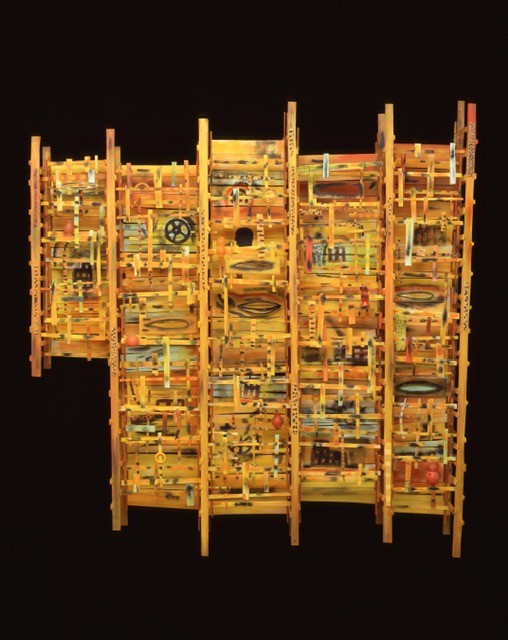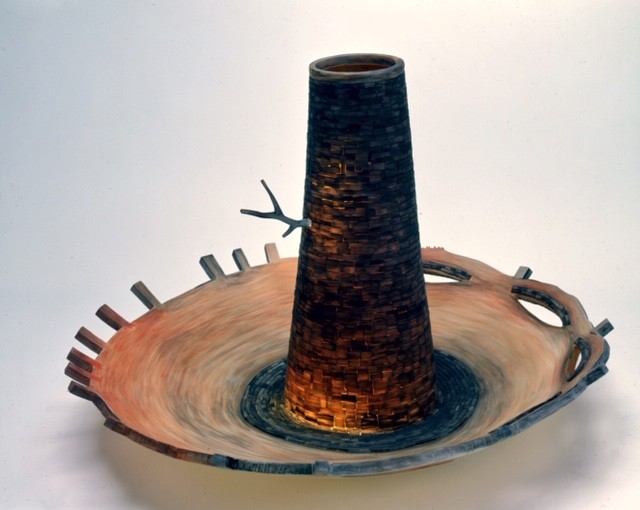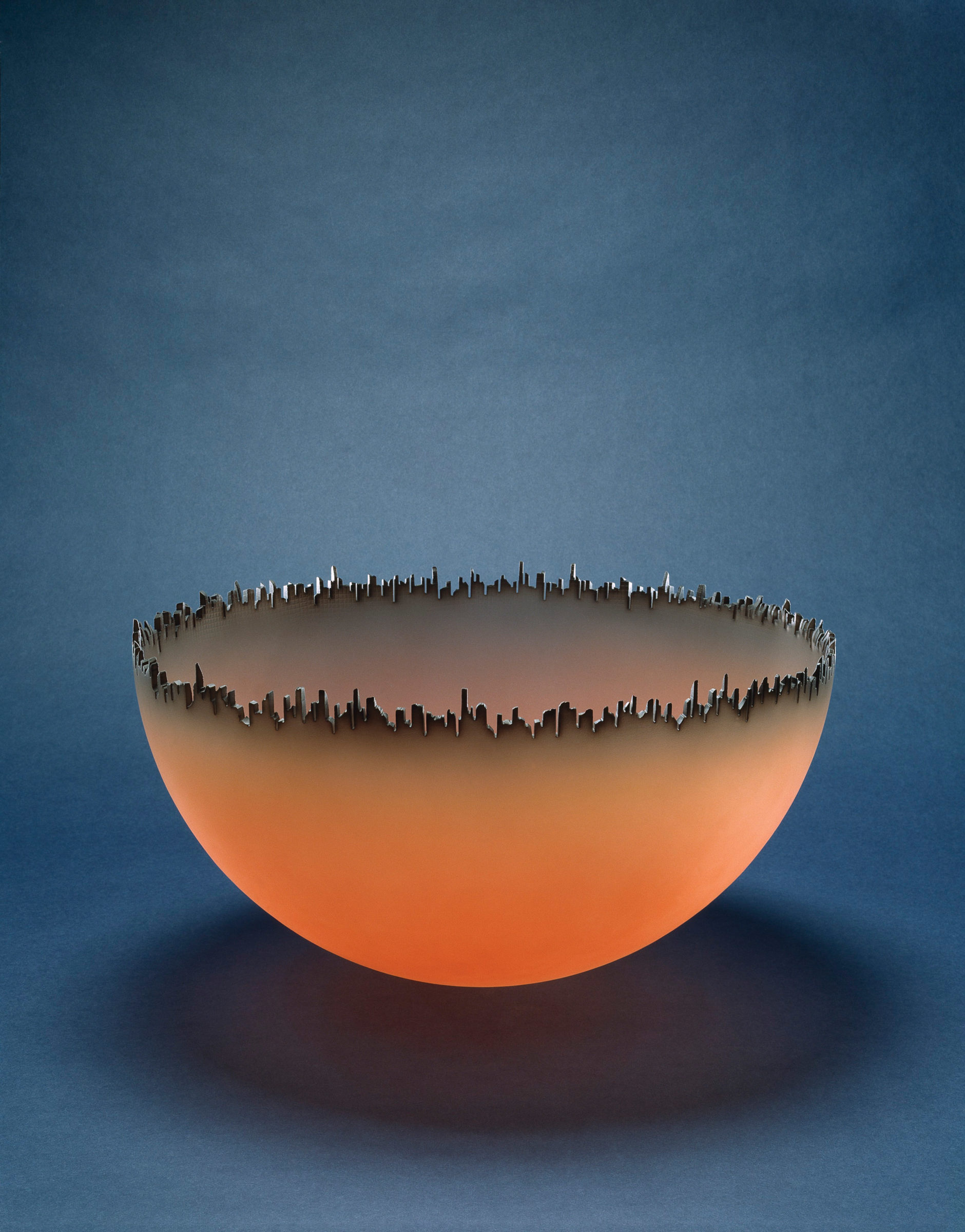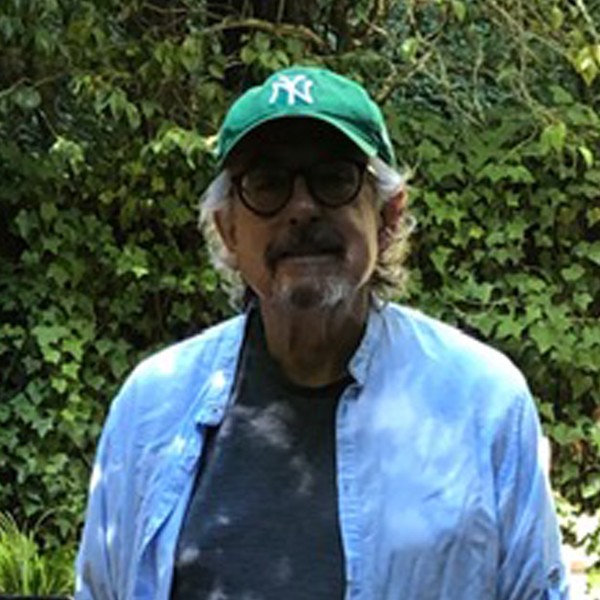
Image courtesy of Jay Musler.
Jay Musler
Born in Sacramento, California, artist Jay Musler (1949– ) attended the California College of the Arts in Oakland from 1968 to 1971, where he studied glass under Marvin Lipofsky. Musler joined Maslach Art Glass in Greenbrae, California, in 1972 and worked there for several years until he established his own studio in the Bay Area. Musler’s pieces are known for their incorporation of cut and sandblasted glass techniques. Many are assembled and include the application of oil paint.
Works

Beyond the Dunes, 2005. Sandblasted glass, oil paint. H: 33 in, L: 29 in, W: 6 in. Image courtesy of Jay Musler.

Burn Fuel, 1996. Sandblasted glass, oil paint. H: 19 in, W: 19 in, D: 19 in. Image courtesy of Jay Musler.

Cityscape, 1981. Overall H: 23.2 cm, Diam (max): 45.6 cm. Collection of The Corning Museum of Glass, Corning, New York (82.4.8).

Bibliography

“Jay Musler’s Painted Glass: The Face of Anger.” Neues Glas, no. 1 (January/March 1985): 12–19.